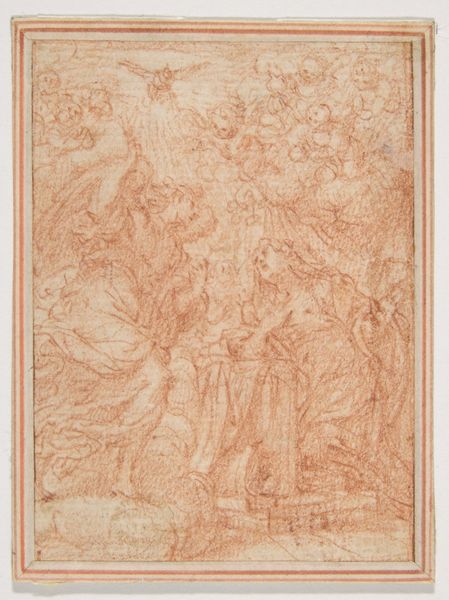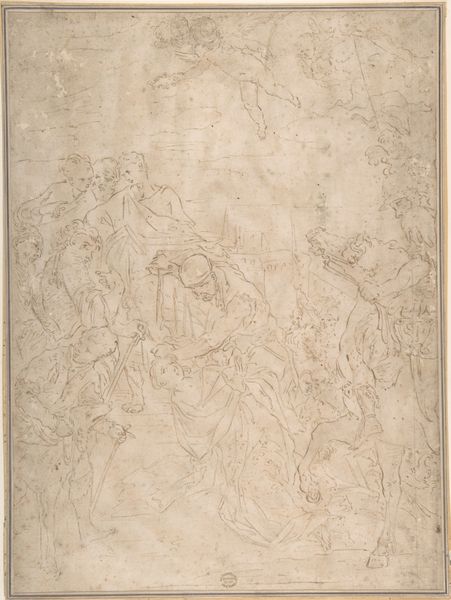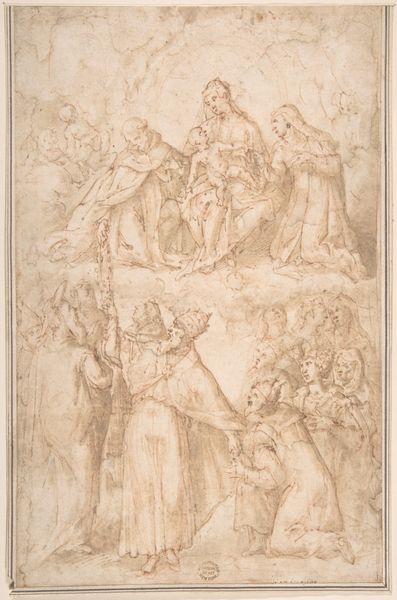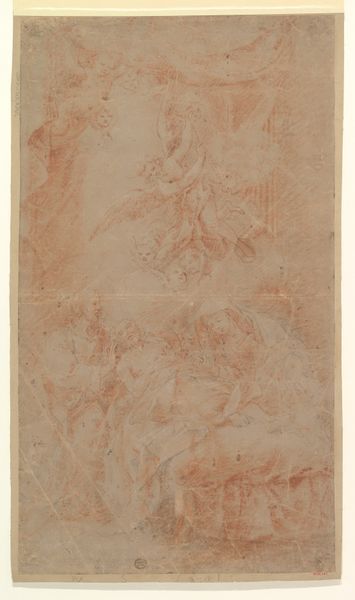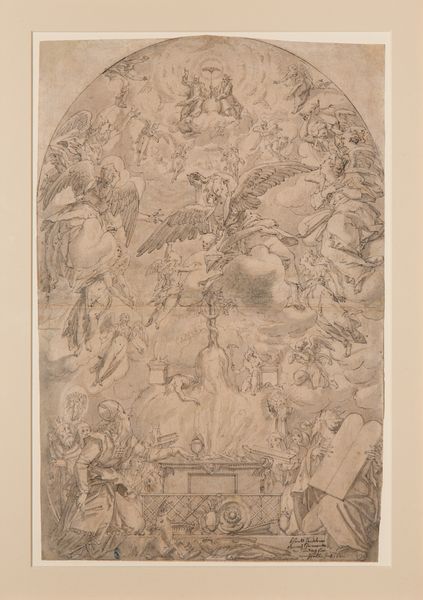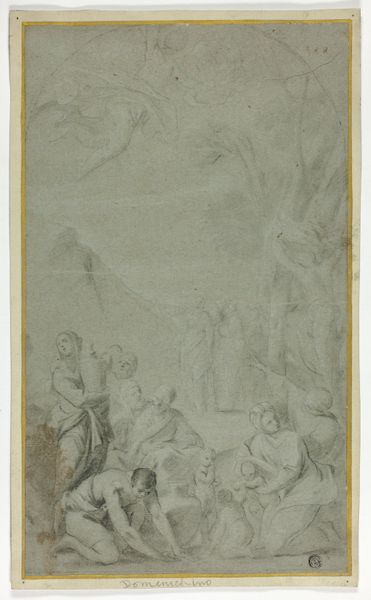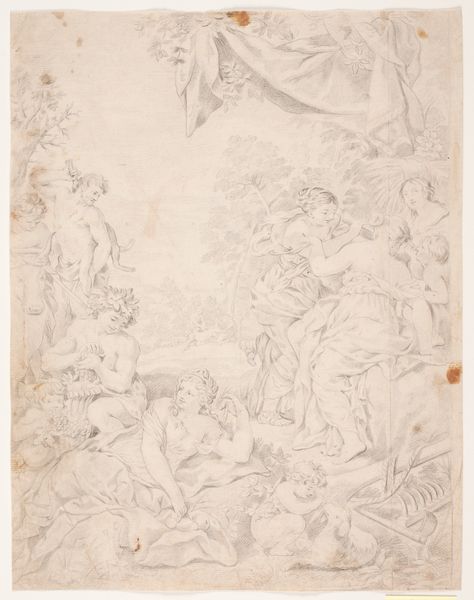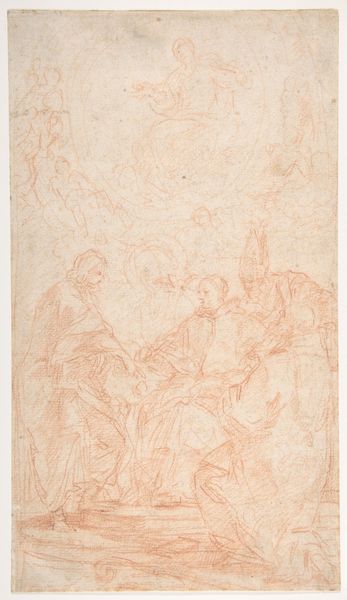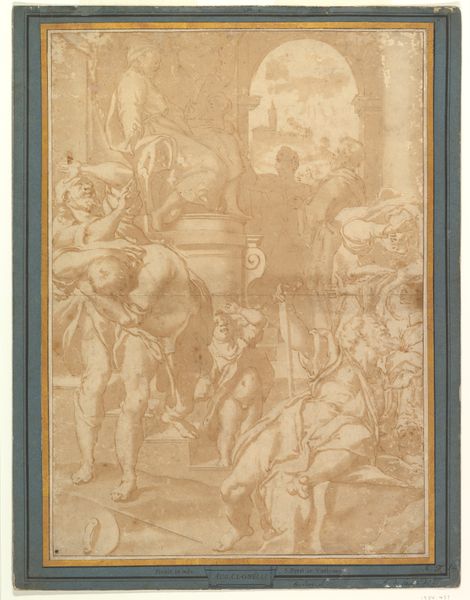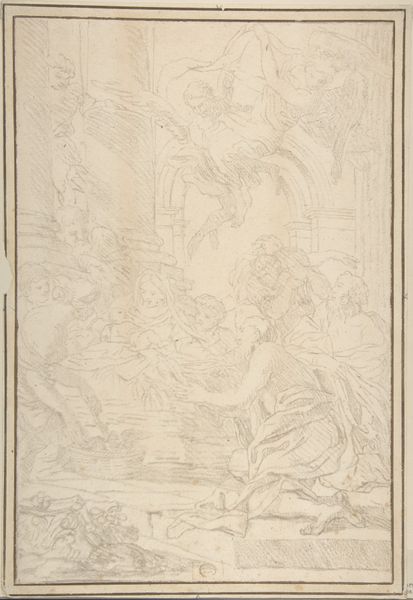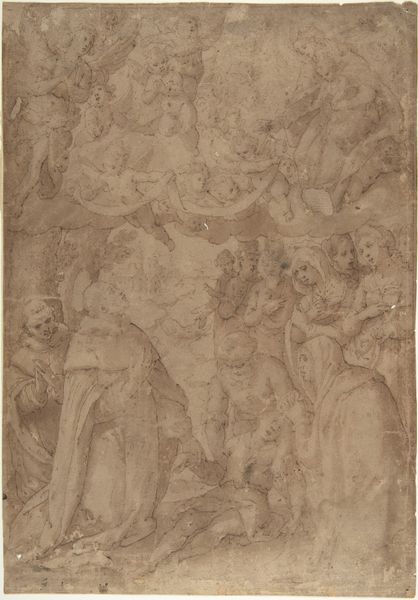
drawing, print
#
drawing
# print
#
figuration
#
line
#
crucifixion
#
history-painting
#
academic-art
#
italian-renaissance
Dimensions: 28-1/8 x 17-1/2 in. (71.4 x 44.5 cm)
Copyright: Public Domain
Curator: This drawing, “A Crucifixion,” dates from sometime between 1600 and 1700. While its maker remains unknown, it resides within the collection of the Metropolitan Museum of Art. Editor: It’s quite striking. The sienna ink lends an overall feeling of age, a faded solemnity. The composition itself is split into what looks like earthly suffering below and divine ascension above, creating a very clear binary. Curator: Absolutely. Note how the anonymous artist chose the crucifixion not merely as an event, but as a moment laden with theological weight. It echoes through centuries of similar artistic depictions, building layers of meaning upon meaning. The bottom section showcases humanity’s response, full of angst and grieving figures clustered tightly, with few gestures between them. Editor: And above, the cherubs swirl in what seems a joyous, ascending movement. A contrast made all the more vivid by the comparatively static poses of the earthbound figures. Though it's line drawing, notice how the line varies; thin in the cherubs’ forms, and thick, more emphatic at the robes in the bottom register. Curator: That contrast in line weight definitely emphasizes emotional distance, reflecting spiritual planes, if you will. The earthly realm of sorrow stands in stark relief against the divinely illuminated heavens. These figures and symbolic divisions communicate a very human yearning, the timeless question of suffering and redemption. Editor: Speaking of symbolism, the spatial arrangement really cannot be ignored. It's the central structural element. This drawing suggests an absolute division, with Christ positioned at the invisible boundary itself—partaking in the sufferings below, and yet reaching towards the salvation above. Curator: Indeed. It is worth pondering how such drawings served as tools, as points of devotional contemplation and as preparation for more complex and ambitious paintings. A simple drawing of line can ignite powerful ideas about suffering, sacrifice, and salvation. Editor: Well said. The beauty of studying the line and form offers access to an ocean of symbolic meaning. It makes for a far richer viewing experience.
Comments
No comments
Be the first to comment and join the conversation on the ultimate creative platform.
